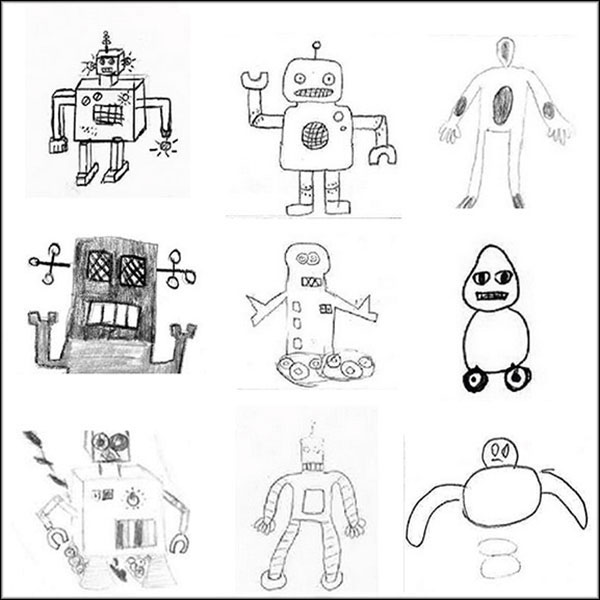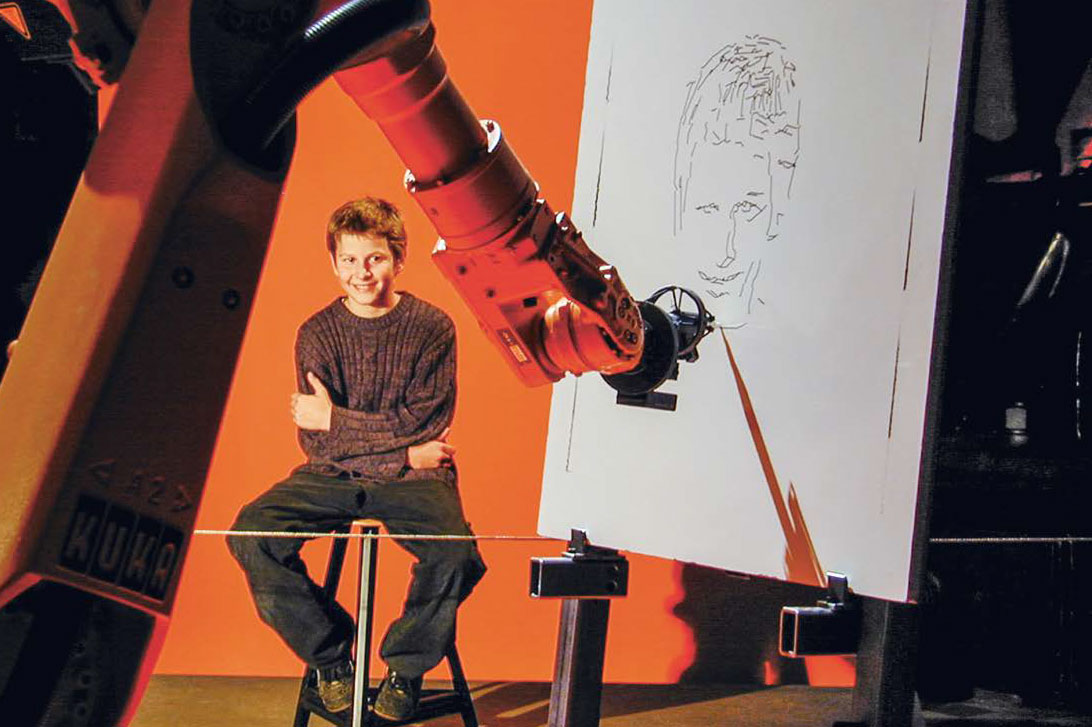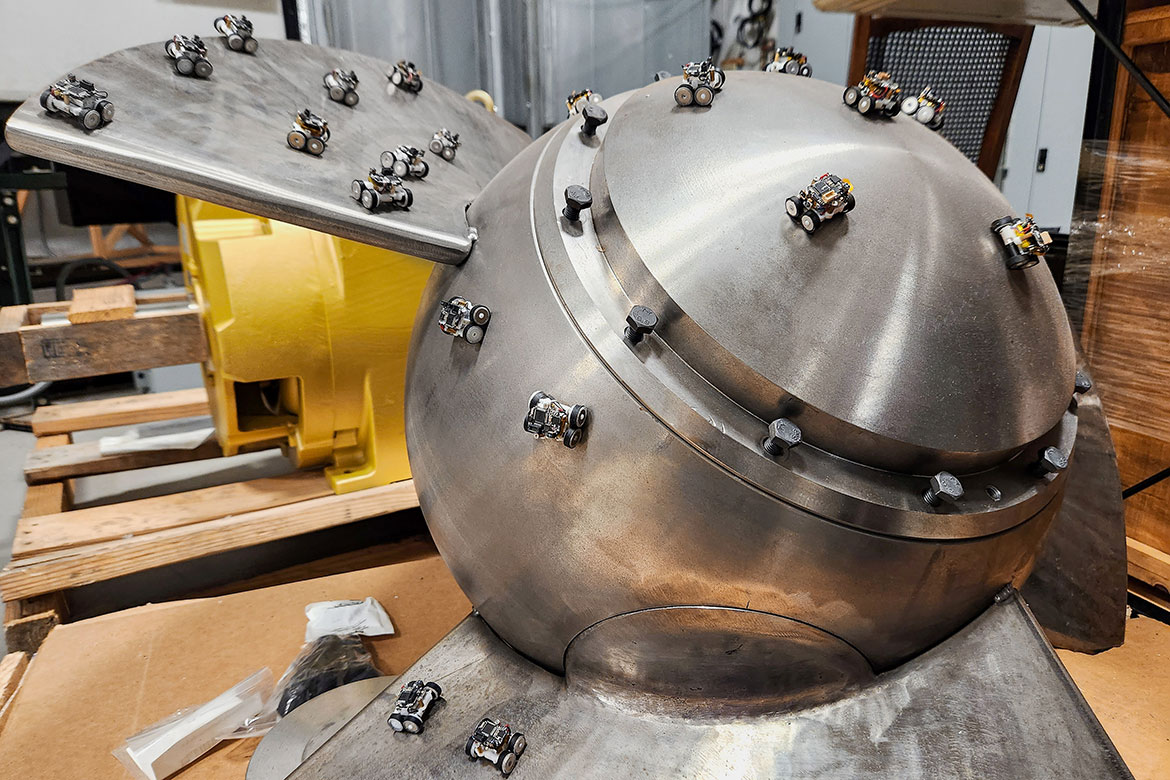Only connect
Human beings can’t swim in a school like fish, or gather information in a beehive. Well-developed robots can do this, however – and they are even able to alter the behaviour of groups of animals.
Robots can be accepted by some animals as belonging to their own kind. They can even influence the animals’ behaviour, which for some people conjures up an alarming vision of a dystopian future. But with their sensors, circuitry and control elements, these robots can also help us to understand the group behaviour of animals. This is the opinion of one of the leading experts in the field, Francesco Mondada of EPFL. These robots could even make the lives of these animals more secure – such as by preventing bees from visiting fields treated with pesticides.
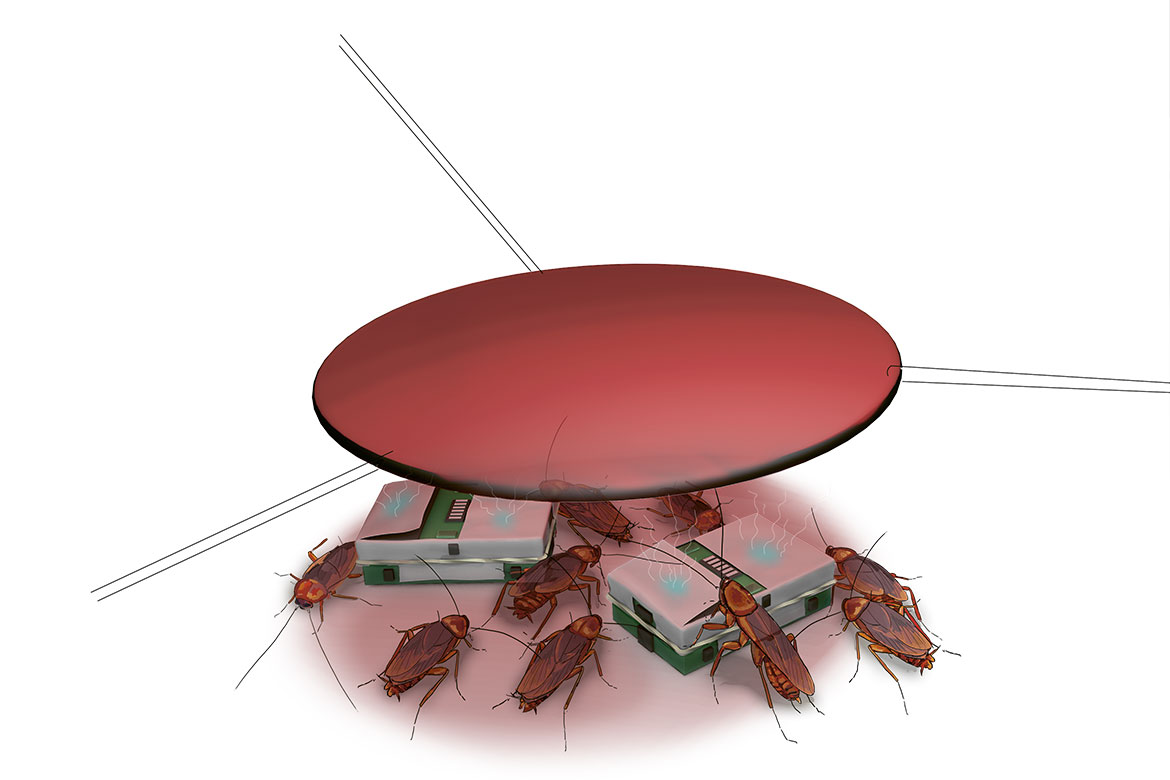
Little robots lure the cockroaches into the lighter hiding place.
COCKROACHES
A roach by any other name
The laboratory: Free University of Brussels / ETH Zurich / EPFL
The robot’s dimensions: 4.1 x 3.0 x 1.9 cm (l x w x h)
The trick: Cockroaches are attracted not by the appearance of their species, but by their scent. So the researchers here developed a kind of cockroach perfume. They drip this cocktail of pheromones onto filter paper and fix it to robots that actually look more like toy cars than roaches. Their scent and their movements, however, are enough to convince living cockroaches, which then treat the robots as if they were of their own kind.
The mission: Cockroaches love to hide in dark crannies. The researchers programmed their robots so that when given a choice of two differently lit hiding places, they would prefer the lighter one. And lo and behold: the real cockroaches followed them. This experiment, published in ‘Science’ in 2007, was the first in which creatures were lulled into accepting robots as belonging to their species, and in which the robots were able to influence their social behaviour.
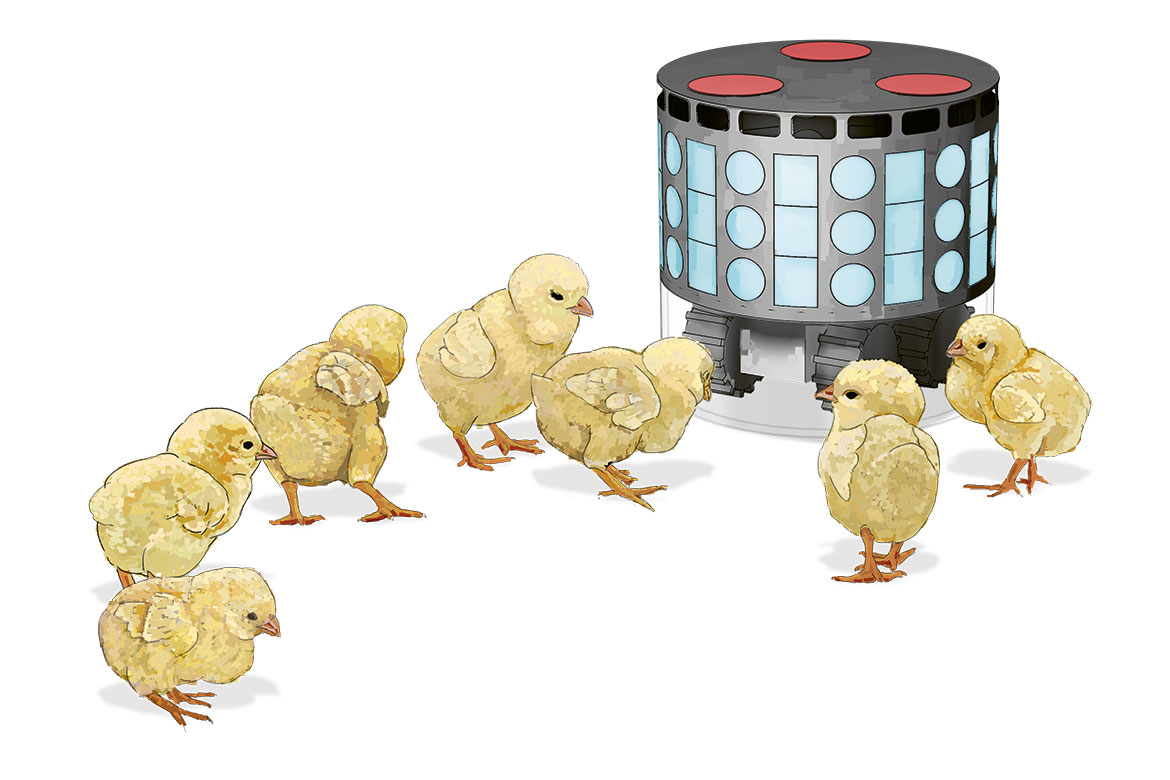
The chicks see the robot as their mother.
BABY CHICKS
Mums on wheels
The laboratory: EPFL / Free University of Brussels
The robot’s dimensions: 18.7 x 32.5 cm (d x h)
The trick: Roughly half a day after emerging from their eggs, chicks start to learn who their mother and siblings are. The researchers used this phase of just a few hours to get the chicks to accept a robot as their mother – it was a cylindrical device that wheeled back and forth in front of them, let out a cheeping signal, and lit up in a certain combination of colours.
The mission: The chicks are fully fixated on the robot hen. They gather around her when she stands still, and follow her from one point to another whenever she moves. In the benchmark experiment, this following reflex was at its strongest towards robots whose colour or behaviour had been impressed on the chicks from the start. According to the researchers, such robots could be employed on chicken farms one day in order to get laying hens to move more, or to explore their enclosure.
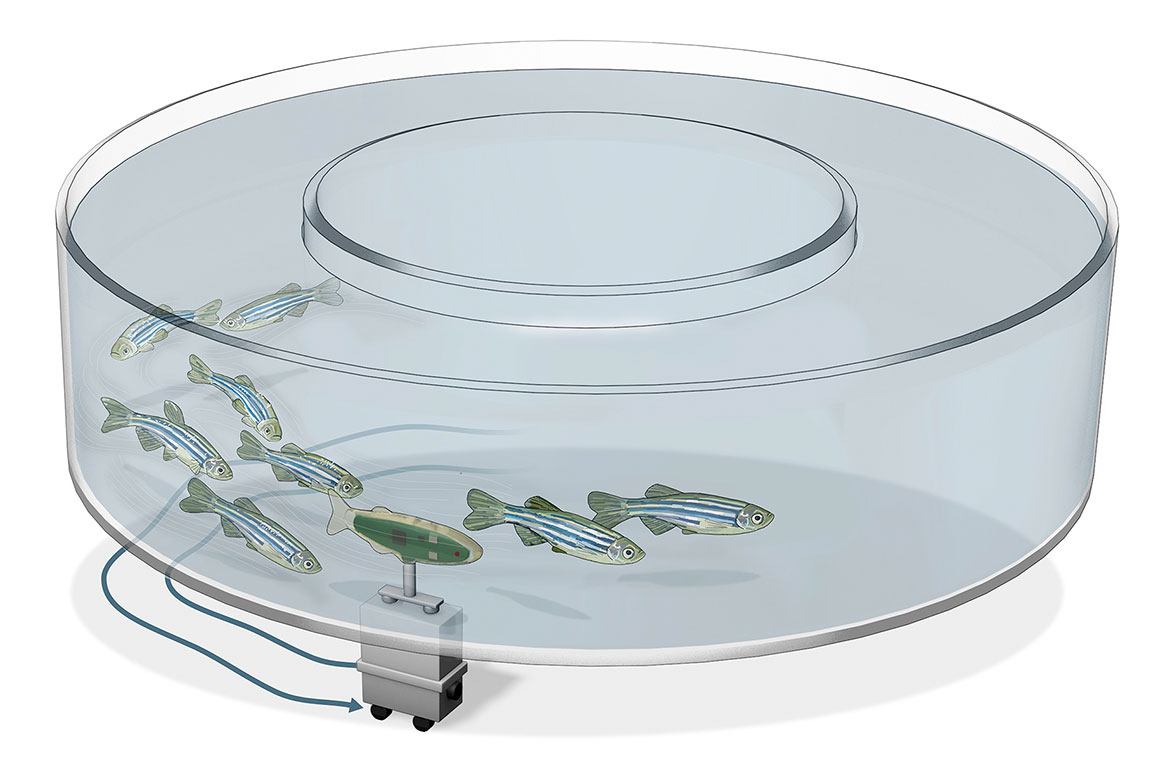
A converted decoy fish determines the swimming direction.
ZEBRAFISH
Synchronised swimming
The laboratory: EPFL / University of Paris Diderot / University of Graz
The robot’s dimensions: 4.5 x 0.5 x 1 cm (l x w x h, with the fish-shaped part in the water)
The trick: In order for their robots to pretend to be zebrafish, the researchers here used a decoy fish of soft plastic such as used by anglers. They fixed it to a rod that linked it up with a robot hidden under the ring-shaped aquarium. Using magnets, this robot then determined the direction in which the decoy swam. The fish took the robot into their school, and it swam with them in a circle.
The mission: With fish, even the behaviour of a single individual can get a school to change direction. When the researchers got their decoy to swim in a particular direction, the real zebrafish followed it in most cases. Further experiments aim to show what factors can influence the complex behavioural patterns of the fish.
Illustrations: Anja Giger

